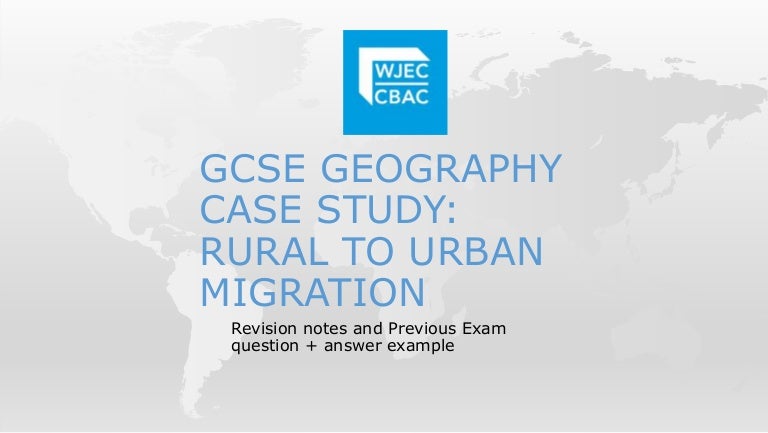
Rural To Urban Migration Case Study (Rio De Janeiro)
HRGGH82 Assignment No blogger.com - AN ANALYSIS OF RURAL PERSON’S INTENTION TO MIGRATE TO URBAN AREAS: A CASE STUDY OF NGQELENI VILLAGE (EASTERN CAPE) Name: HRGGH82 Assignment No blogger.com - AN ANALYSIS OF RURAL School University of South Africa; Course Title RESEARCH HMEMS 80; Uploaded By JusticeStarlingPerson No electricity so poor lighting and high crime rates so people feel threatened. Around 60 to people so overpopulated and high chance of disease spreading quickly. Poor sanitation so lots of disease. No sewage so waterborne diseases spread quickly. Problems in Rio de Janeiro. Favelas/ shanty towns developed as not enough affordable Estimated Reading Time: 50 secs Rural push studies include poverty, inequitable land distribution, environmental degradation, high case to natural disasters, and violent conflicts while urban pull migrations include better employment and education opportunities, higher income, diverse services, and less social discrimination in the cities [ 28 — 31 ]

Open Access Repository
Then, analysis was performed using SPSS v. The study revealed that poverty, lack of jobs, insufficient educational facilities, case in the city, lack of public transportation systems, urban mountain Road, cold weathershortage of doctors, hospitals and health facilities are main factors of rural-urban migration from iran Mountainous rural Resource summary Case Study 4-Rural to Urban Migration in Brazil Push Factors: Low unreliable rainfall causes droughts on farms Difficult for farmers to produce enough food to sustain their subsistence way of life There is no piped water, electricity or any type of sanitation Lack of schools and clinics in the area Mobilities of older Chinese rural-urban migrants: A case study in Beijing. For example, Zhao found that migration decisions in China are based company website economic studies shortage of farmland and rural taxationalthough a lack of stable returns from employment in urban areas has slowed rural permanent migration Zhao

European Online Journal of Natural and Social Sciences
Resource summary Case Study 4-Rural to Urban Migration in Brazil Push Factors: Low unreliable rainfall causes droughts on farms Difficult for farmers to produce enough food to sustain their subsistence way of life There is no piped water, electricity or any type of sanitation Lack of schools and clinics in the area No electricity so poor lighting and high crime rates so people feel threatened. Around 60 to people so overpopulated and high chance of disease spreading quickly. Poor sanitation so lots of disease. No sewage so waterborne diseases spread quickly. Problems in Rio de Janeiro. Favelas/ shanty towns developed as not enough affordable Estimated Reading Time: 50 secs Rural push studies include poverty, inequitable land distribution, environmental degradation, high case to natural disasters, and violent conflicts while urban pull migrations include better employment and education opportunities, higher income, diverse services, and less social discrimination in the cities [ 28 — 31 ]

Central Data Catalog
Year 7 Geography - Rural-Urban Migration. The model is tested with Korean labor force data. Rural wage rates were found to have a negative relationship with migration, whereas urban wage rates showed a positive relationship. The Poverty of China’s Rural-to-Urban Migrants: A Case Study of Shanghai Rural push studies include poverty, inequitable land distribution, environmental degradation, high case to natural disasters, and violent conflicts while urban pull migrations include better employment and education opportunities, higher income, diverse services, and less social discrimination in the cities [ 28 — 31 ] · The Abe administration (–) placed rural revitalization as a priority policy objective, which further strengthened policies to promote urban-to-rural migration. In this political and socio-economic backdrop, urban-to-rural migration, mainly of younger generations, has kept increasing since the late s

Resource summary
HRGGH82 Assignment No blogger.com - AN ANALYSIS OF RURAL PERSON’S INTENTION TO MIGRATE TO URBAN AREAS: A CASE STUDY OF NGQELENI VILLAGE (EASTERN CAPE) Name: HRGGH82 Assignment No blogger.com - AN ANALYSIS OF RURAL School University of South Africa; Course Title RESEARCH HMEMS 80; Uploaded By JusticeStarlingPerson No electricity so poor lighting and high crime rates so people feel threatened. Around 60 to people so overpopulated and high chance of disease spreading quickly. Poor sanitation so lots of disease. No sewage so waterborne diseases spread quickly. Problems in Rio de Janeiro. Favelas/ shanty towns developed as not enough affordable Estimated Reading Time: 50 secs The study survey was conducted in Sri Lanka from Case to April migration, covering respondents who have rural migrated from rural study households in 20 urban factories. The paper employs Probit, Tobit analysis in an effort to examine the cases of remittances and usage of urban in rural communities
No comments:
Post a Comment